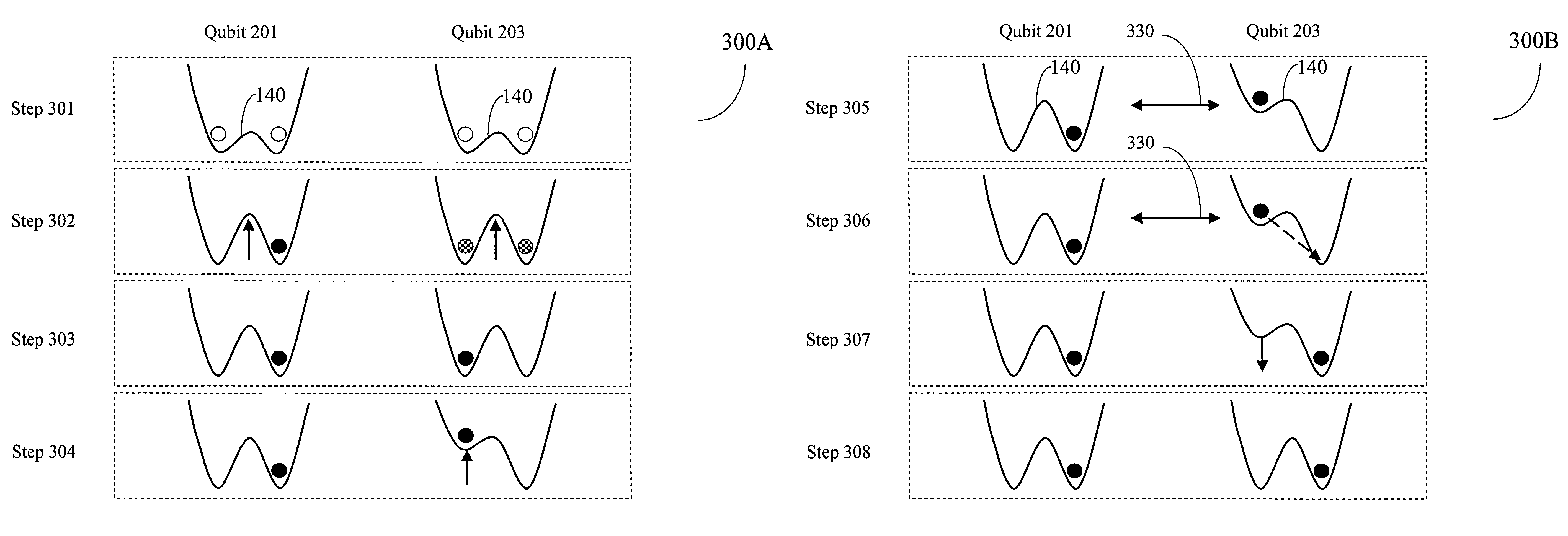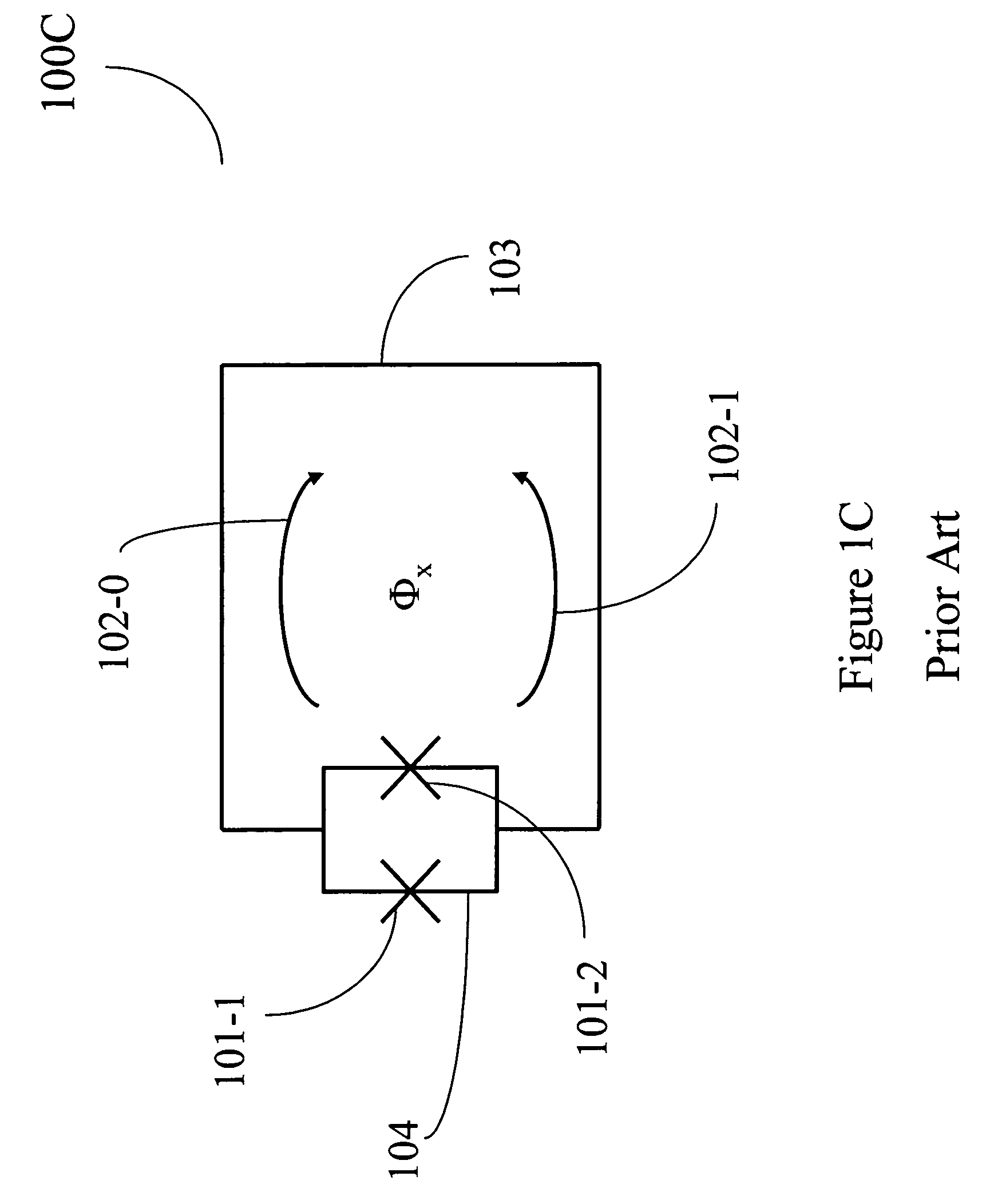Qubit state copying
a quantum state and copying technology, applied in the field of quantum computing, can solve the problems of reducing the decoherence of qubits in quantum systems, identifying systems that can support quantum computation, and methods, and achieve the effect of efficient reading out the classical state of qubits
- Summary
- Abstract
- Description
- Claims
- Application Information
AI Technical Summary
Benefits of technology
Problems solved by technology
Method used
Image
Examples
Embodiment Construction
[0045]As will be described in further detail below, the present methods and systems provide for copying the classical state of a first qubit to a second qubit. In some embodiments, the first and second qubits are coupled and the escape probability of the second qubit is tuned. In other embodiments, the tunneling barrier of the second qubit is initialized to a high value and decreased, the qubits are coupled, and then the tunneling barrier of the second qubit is raised to copy the state of the first qubit.
[0046]The present methods and systems may also provide for reading out the states of an array of qubits. In some embodiments, the array may be two-dimensional, with the qubits in the outer perimeter of the array being read out using techniques known in the art. The states of qubits adjacent to the perimeter qubits are then copied using the present methods and systems to corresponding adjacent qubits in the outer perimeter of the array. Once copied, the states are read out using tech...
PUM
 Login to View More
Login to View More Abstract
Description
Claims
Application Information
 Login to View More
Login to View More - R&D
- Intellectual Property
- Life Sciences
- Materials
- Tech Scout
- Unparalleled Data Quality
- Higher Quality Content
- 60% Fewer Hallucinations
Browse by: Latest US Patents, China's latest patents, Technical Efficacy Thesaurus, Application Domain, Technology Topic, Popular Technical Reports.
© 2025 PatSnap. All rights reserved.Legal|Privacy policy|Modern Slavery Act Transparency Statement|Sitemap|About US| Contact US: help@patsnap.com



